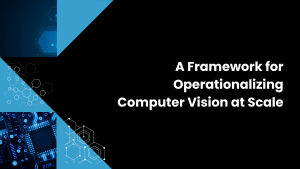New computing architectures and methods are leading to the convergence of operational and analytical systems. However, an organization’s legacy operational systems are not likely to be ready, requiring a healthy dose of modernization or replacement not seen since Y2K.
Efforts to implement intelligently-informed operations based on sophisticated analytics have been in underway for a long time. What is different today is that the technologies and economics of operational intelligence allow for more complex, sophisticated systems to be deployed at lower cost and risk, raising interest in what was previously a niche domain.
One technology that is especially important to this change: hyperconverged systems that make combining different classes of workloads on common hardware. Analytics in commercial organizations has historically been limited to special groups working mostly off-line. Platforms for transaction processing were separated for performance and security reasons, an effect of “managing from scarcity.” But scarcity is not the issue anymore.
Operational intelligence requires the addition of infrastructure and tools, either on premises or via some variant of cloud computing, to handle the speed, volume and diversity of data. The operational intelligence tools most often explored include recommendation engines, real-time streaming sensor applications, personalized medicine and supply chain logistics, and even humanitarian applications such as the organization charity: water, which uses a remote sensor template to monitor and maintain its water wells.
Operational intelligence also requires different skills than most organizations are likely to have. Implementing Operational Intelligence in your organization will be both easier and more complicated than you might imagine. The key issues you’ll have to address, from easier to more complex, are:
- Easier: Assess your organization’s affinity for certain issues. Until recently, understanding silos of operational systems was more or less a manual effort, even with the assistance of software tools. Much more automated data discovery and integration of data sources are available today, and design requirements for the target systems are much less restrictive. Greater capacity eliminate the need for single schema, indexing, and other “tuning” for specific tasks.
- More difficult: Initiate programs to affect other changes, which will take time. Most development and spending on enterprise systems tried to address the problem of automating and improving business processes at an operational level. Analytics was of secondary concern. As a result, the functioning of those systems is not conducive to analytical processing.
- Most Complex: Discover exposures due to a range of “gotchas.” Operational systems in organizations are composed of a collection of legacy systems that are not amenable to grafting analytical processes to them.
Easier: Assess Your Organization’s Affinity For These Issues Now
It is now not only possible, but reasonable to assemble a platform to provide real-time answers and decisions from both internal and external data, at tremendous volumes and speed, and at costs considerably lower than just a few years ago. In additional, most enterprise software vendors have already embedded analytics into their products. Whether that is sufficient for your purposes needs to be determined on an individual basis. Obviously, SAP, Oracle, Salesforce, for example, are players, as are many smaller vendors.
It is also easier today to overcome the cultural issues that separate IT (operational) and the rest of the business (analytical), a trend that emerged about 10 years ago. There is a clear trend of technology vendors and the Open Source community quickly developing tools for business analysts to use to make Operational Intelligence more accessible. Intelligent operations require one more essential factor: a desire to change decision processes and to learn to apply today’s quantitative, stochastic and machine learning capabilities to your operations. It is not easy. Those who have to make the greatest adjustment are typically those who have the least understanding how these systems reason and work. That takes time and finesse. It is wise to start small, and pick an area that can have some noticeable impact but is constrained enough to be manageable as an initial learning project. Build confidence in the approach and grow from there.
More Difficult: Initiate Programs to Effect Necessary Changes, Which Will Take Time
The drive to automate business processes of the past few decades, typically those modeled with BPM (Business Process Modeling) tools, generated systems that were too specific in many cases, and employed too many “human exits” when it became too difficult for the modeling tool to model the business process. Operational Intelligence is most effective without these human exits. These systems tend to be very brittle and there is little interest in opening them up. In research reported by Mulesoft, 2017 Connectivity Benchmark Report, 65% of surveyed Information Management Decision Makers consider legacy systems “very” or “extremely” important. Digitally transforming while maintaining legacy systems is critical for Information Management Decision Makers.
Most Complex: Discover Exposures Due To a Range of “Gotchas”
Key operations in organizations are run by so-called “shadow systems” that may be controlled by departments or even individuals, running on obsolete platforms, in Excel spreadsheets or even compiled systems whose source code is lost. Many of these systems arose due to a need for functionality not provided by IT, and even perform important functions, but It will be difficult to integrate data in a timely manner from many of these systems.
Additionally, a range of other possible exposures have to be addressed, including a number that keep causing headaches over multiple generations of technology. These includes simple, but potentially deep, problems like:
- Do we have the documentation we need to effect the integrations we want?
- Who manages the application and is responsible for proper operation?
- Are the tools employed by the application up to the transition?
- What new loads will the integration generate and how will that effect capacity planning?
- Will the new function be inherently less secure than the current system – and is that OK?
- Will users of the system be able to employ the new capability or are they likely to rebel?
Solution: Never Treat Operational Intelligence as Mainly a Technology Problem
The same advice applies that you should use on any initiative, which is, what problem are you trying to solve? You should work backwards from there. Use of some clear terminology can avoid confusion within your organization, not just internally, but in communication with vendors and service providers. To get the most out of your operational intelligence progress:
- Be clear about what you need. Having clarity on the meaning of analytics has clear benefits. Because the nature of analytics is a little mysterious to most people, a vendor statement that they provide “embedded predictive analytics” or “machine learning” can no longer be taken at face value. You should look closely to see if those capabilities line up with your needs. And, of course, be willing to pay for what you need and ensure that vendors discount based on what you don’t.
- Don’t assume high value means high resource costs. In the same vein, you needn’t hesitate to begin because you believe you need to source a dozen PhDs, when in fact, your needs are in a less complicated category. Concerns regarding high-value applications shouldn’t balance costs, functional improvements, and increased operational risks due to technology, administration, or user adoption factors.
- Formulate specific vendor questions based on what level of sophistication and resources you need. By more clearly specifying what type of technologies you need, it becomes very easy to ask: Is this tool designed to discover and create predictive models, or to deploy them from other sources? Do you offer training in quantitative methods or only in the use of your product? Is the tool designed for authoring scoring models or just using scored values? Bias your technology selections to getting value today, but use this information also to shape your estimates of future requirements – and test vendor offerings against that estimate, also.
- Use analytic knowledge to start to prepare the rest of the organization. Understanding what type of analytics – and results – you need and how you will be able to communicate to those who are not familiar with the methods. Operational intelligence is a team sport. To use a sports analogy, your play won’t work if your quarterback (senior executives) are the only ones who know what’s been called. Rank-and-file users remain the most important creators and potential destroyers of business value in operational intelligence.


